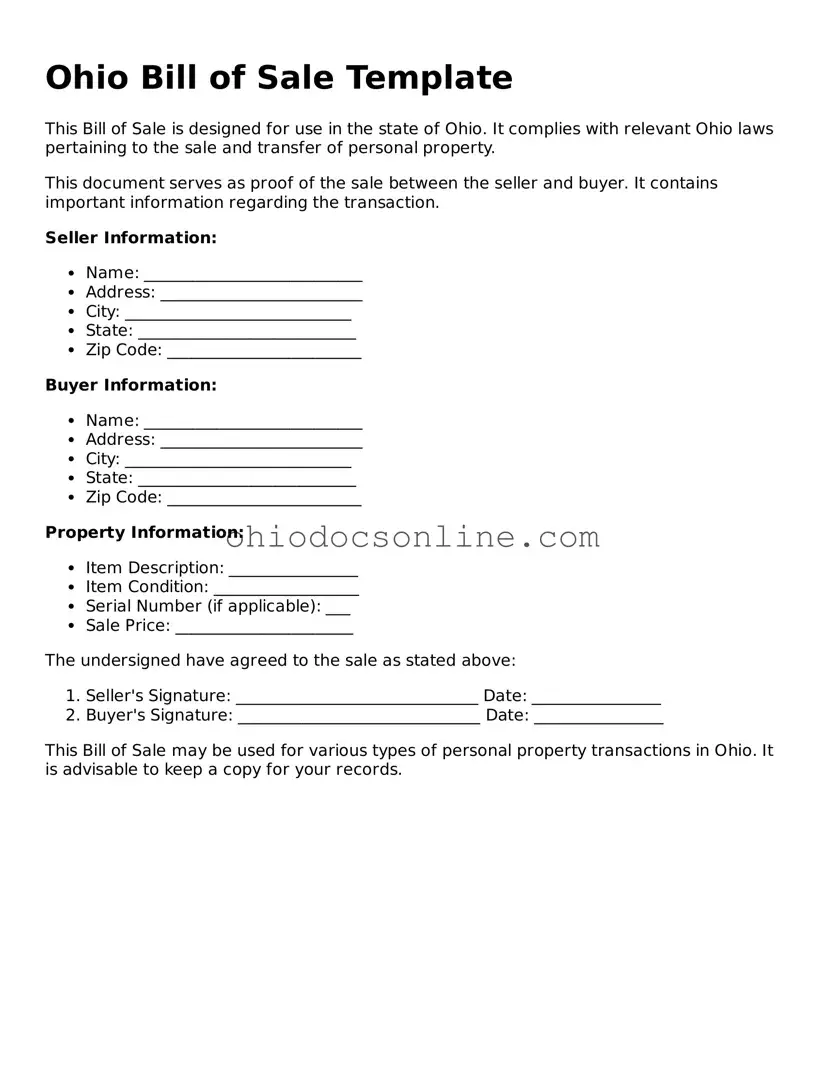Printable Bill of Sale Template for Ohio
The Ohio Bill of Sale form is a legal document that facilitates the transfer of ownership of personal property from one individual to another. This form serves as proof of the transaction, detailing the items sold and the terms agreed upon by both parties. Understanding its importance can help ensure a smooth and legally sound transfer of assets.
Open Editor
